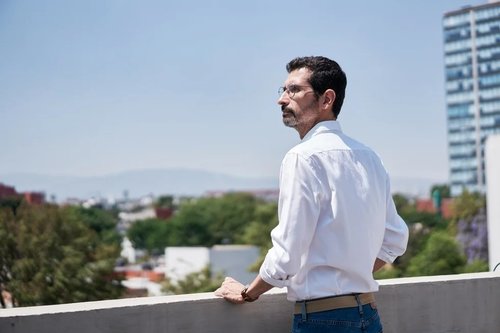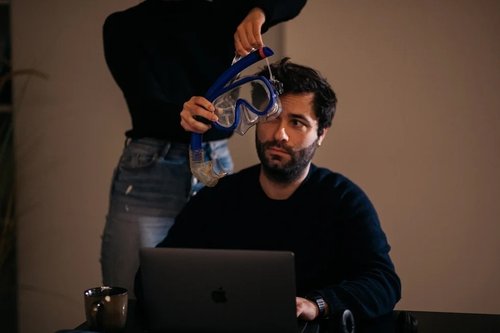Why is Europe so eager to attract foreign workers?
May 22, 2024
13 mins


Journalist and translator based in Paris, France.
It’s one of the wealthiest economies in the world, but the European Union isn’t attracting as much talent from abroad as it would like to—even as it is in the midst of a migration crisis.
If you’re looking to live and work in Europe, you might be in luck: the European Union is on the hunt for foreign labor—and not just highly skilled professionals. Throughout the union’s 27 countries, national governments are facing shortages of workers at all levels and in all types of employment—from waiters to data scientists—and are making efforts to bring in newcomers.
It’s not just immigrant-friendly states such as Germany behind this push; even notoriously hardline governments in Hungary and Poland have started to integrate “guest workers” from nations outside the EU, which are often referred to as “third countries.”
Yet it’s not as if no one wants to work in the EU. European countries are known for their affordable healthcare, exciting food, and the ongoing migration crisis. It isn’t just an attractive place to live; it’s viewed as a safe haven by the thousands who risk their lives to land on its soil. With so many people flocking to its shores, why is the EU claiming it needs more foreign workers?
What’s driving Europe’s push to bring in workers?
In her latest State of the Union speech, Ursula von der Leyen, the president of the European Commission, cited “labor and skills shortages” as one of Europe’s three major economic hurdles. Here are just some of the figures that have had politicians fretting:
- Almost three-quarters (74%) of small to medium-sized EU businesses report “concretely” facing a skills shortage for at least one job role in their company.
- More than 90% of professional roles in the EU require “a basic level of digital knowledge,” but only about 54% of the EU population have basic digital skills.
- The average job vacancy rate in green industries, which are crucial to Europe’s financial future, doubled between 2015 and 2021.
The job vacancy rate in the EU peaked at 3% in 2022. “This means that nearly 3% of jobs across the EU are sitting vacant, even after efforts to upskill, reskill, and activate the domestic workforce,” a spokesperson from the European Commission told Welcome To The Jungle. “To address the shortages the Member States are facing, the EU will also need to attract [people with] skills and talent from all around the world.”
Where most migrants choose to go
To add insult to injury, the EU isn’t attracting as much international brain power as other big economies. Last August, Indeed reported that searches from abroad for jobs in Australia, Canada, and the UK had surpassed pre-pandemic levels by 141%, 74%, and 69%, respectively. At the same time, searches from abroad for jobs in the EU had risen by just 5%.
This problem isn’t new: in 2015 and 2016, only a quarter of highly educated immigrants residing in OECD countries had chosen to live in the EU, while nearly two-thirds preferred countries in North America or Oceania, which includes Australia and New Zealand. Many migrants of all education levels go to the United States—an economic powerhouse capitalizing on almost 20% of the world’s immigrant population.
Yet the EU isn’t exactly an underdog in the competition for talent. It has achieved the highest rankings in social progress and life expectancy, according to a report from McKinsey Global Institute, and many EU nations boast a weighty GDP and the world’s best quality of life for foreigners. The EU can also snag citizens from countries sanctioned by the United States. In 2022, some of the largest shares of Blue Cards, the EU’s work permit for highly skilled migrants, went to people from Russia, Belarus, and Iraq.
What do other places have that the EU doesn’t?
So what’s bringing the EU down? Experts have a few theories.
- Language: “The first factor may actually be the attractiveness of English-speaking markets,” says Alexandre Judes, the economist from Indeed’s Hiring Lab who authored the report on foreign job searches to the EU. “The first thing that jumps out from our data when you look at the share of foreign clicks [clicks coming from outside the country where the job posting is based] in either Australia, the UK, or the US is that it’s generally higher than in the EU.” Anglophone nations benefit from the fact that English is the most widely spoken language in the world, while other European languages dominate most workplaces in the EU. “If you are alone in speaking English, it’s going to be difficult to cooperate with your colleagues,” Judes says.
- Location: Some industries are linked to certain regions or cities. This doesn’t just refer to farmers and tour guides. “Let’s say you want to be a global movie star. You have to go to Hollywood or New York,” says Tino Sanandaji, an economist, public policy expert, and author of Mass Challenge: The Socioeconomic Impact of Migration to a Scandinavian Welfare State. “You can’t go to Sweden. There is nothing Sweden can do realistically about that. To some extent, that’s what’s happened with tech…That’s the most profitable industry in the world, and it’s concentrated in the US, particularly in the California Silicon Valley area. And it’s not easy for the European Union to entirely reverse this trend.”
- Brexit: “Since Brexit, we’ve seen a huge increase in non-European clicks into the UK,” explains Judes. “That’s the result of a deliberate policy. [The UK] needed to attract non-Europeans to compensate for the loss of European talents after Brexit.” Of course, the other major economy competing to attract non-Europeans is—Europe.
- The kind of jobs available: The Indeed report shows that, generally speaking, foreigners tend to click on certain types of jobs more than others, and some EU countries have vacant posts that aren’t as interesting to overseas job seekers. “For instance, in France, we have a lot of postings in education and maintenance,” explains Judes. “In the UK, they have a lot of postings in IT and software development, and these postings usually have a higher share of foreign clicks.”
- Tighter labor market: In the EU job market, foreign candidates are more likely to go head-to-head with native job seekers, who get priority. “The UK and the US are very tight labor markets,” says Judes. “So they definitely need some manpower.” The EU’s unemployment rate sits at a record low of 5.9%, but it’s still notably higher than the 3.8% and 3.7% seen in the UK and the US. “So, theoretically, [the EU] should be able to find candidates domestically,” he says.
Why locals can’t fill all the employment gaps
In practice, politicians and economists tend to cite two main reasons why EU nationals alone can’t take up all the available roles.
The skills shortage: It’s hard to find a sector that doesn’t rely on technology, such as artificial intelligence, to stay afloat. Yet experts in these relatively new fields aren’t easy to find. At the same time, the rush to curb global warming has seen the demand for those with “green skills”—e.g. environmental planning or sustainable design—grow almost twice as fast as the share of workers who actually have these skills, according to LinkedIn’s Global Green Skills report. While the EU recently launched programs to achieve a much-needed digital transformation within its population, some jobs can’t wait for locals to be trained up. “In the short term, it’s hard to see the alternative to immigration,” says Judes.
The aging population: Lifespans are up and birth rates are down. That means the proportion of people of working age in the EU is shrinking while the number of older citizens who depend on them is increasing. This jeopardizes many European retirement schemes, where the working population pays their elders’ pensions.
To make matters worse, professions vital to the green industry are “expected to be particularly affected by population aging,” says the spokesperson for the European Commission. Such sectors as electricity, water supply, and waste management have the largest proportions of older workers in the EU. Meanwhile, younger employees generally make up less than 8% of these workforces. One proposed solution is to replace retiring workers with younger talent from abroad.
What the EU is doing to boost employment of locals
Importing labor isn’t seen as a panacea but as complementary to the “relentless efforts to upskill, reskill, and use the untapped potential of the EU’s domestic workforce,” according to the Commission’s spokesperson. “The EU’s drive to fill labor shortages in the EU starts at home.” EU nations are using various strategies to boost local employment, including:
Reducing inactivity rates. Almost a quarter (24.8%) of EU adults are economically inactive, meaning they are neither employed nor looking for work. A sizable portion of these people are studying, sick, disabled, or caring for others. Policies that improve healthcare, childcare, disability protections, and paid apprenticeship for students could help bring more members of society into the workplace.
“It’s about trying to encourage people into work,” says Robert Plummer, a senior advisor specializing in migration and employment at the employers’ lobby group BusinessEurope. “And for those who are outside of the labor market, making it more attractive financially to work than it is to receive benefits at home.”
Examining education. ”We also still have issues around skills mismatches,” Plummer says. “And that relates to the sorts of studies that young people are doing. When they first enter the labor market, they may lack the specific technical and soft skills employers need. So what we see there is the need to have better alignment between education and training systems with labor market needs.”
Fixing intra-EU mobility. All EU citizens have the right to live and work in any EU country they please—it’s one of the four founding principles of the union. Some EU workers from countries with high unemployment move to richer, neighboring nations with jobs to fill but, generally, there’s not a lot of labor mobility across Europe, says Judes.
According to Plummer, there are “a number of practical, logistical, and administrative issues” that can arise, such as understanding the language or tax system in a new country, even if it’s right next to yours. He also notes that recruiters don’t always recognize qualifications or trust work experience from a country where the education system is different and job references are harder to verify. Plummer says that Eures, a job-matching platform between EU nations, is “not widely used and not widely known amongst employers,” as only 5,000 of the EU’s 31.5 million active businesses use it.
“I think, for a company, it doesn’t really matter where somebody comes from if [the company] can fill the position with someone who addresses the skills needed, whether it’s lower skilled, medium or high skilled,” says Plummer.
The wide range of jobs that are hard to fill
As Plummer indicates, EU companies need more than first-class tech whizzes; they’re missing workers of all education levels in a variety of fields. On the European Labor Authority’s list of severe job shortages, cooks rank right behind software developers, and heavy truck and lorry drivers come ahead of them both. Many of the professions cited require “skills that are not very hard to find, but may be difficult to find in the volume [needed],” says Jonathan Chaloff, a comparative migration policy expert at the OECD.
Judes explains it like this: “So you have, I would say, two broad categories of hard-to-fill jobs and, essentially, it’s a competition among countries.” The two categories sit at opposite ends of the salary spectrum: well-paid posts that require highly specialized knowledge, and “demanding or low-paid jobs.” While many people could fill vacancies in the latter category, few want to take on grueling tasks or work in unhealthy environments for a low salary. This could be an important reason behind the dearth of locals available to take up positions that shouldn’t be hard to fill. “Working conditions may also be a factor in the identification of widespread shortages in hospitality,” notes the European Labor Authority.
Healthcare staff shortages are widespread in the European Union, including in France, which has long been known for its high standard of care. “Most of the time, these are demanding jobs,” says Judes. “You need to maybe work late at the hospital. The pay’s not very good. You have housing cost issues. There are some big hospitals in Paris and housing is very expensive there. So the nurses need to rent or buy a flat 50km [31 miles] or even 80km away.” The World Health Organization (WHO) has accused some EU countries of being “very dependent on international recruitment to fill HCWF [healthcare workforce] gaps.” Germany has plans to expand immigration for Filipino healthcare workers, and Italy has recently brought in health professionals from Cuba.
Economists like Sanandaji also question the labor shortage in jobs that aren’t hard to train. “In economics, if you have a labor shortage, you should observe that wages go up,” he points out. Sanandaji worries that bringing in workers from less wealthy countries to do badly paid jobs keeps conditions from improving.
What about the migrants already living in Europe?
Only 6% of the EU population aren’t citizens, according to the European Commission. About 20% of residence permits are given for work; other reasons include family, education, and asylum. The last category only represents about 15% of EU residence permits. The same is true for irregular immigration, which only accounts for a very small portion of total migration, despite the claim by some politicians that illegal migrants seeking refuge may “overwhelm” Europe.
Work permits typically go to higher-paid workers because many member states don’t have a regular migration channel for the lower-paid occupations, according to Chaloff. “So if you’re a baker or if you’re a mason, a roofer, a street sweeper, or building cleaner, then you’re probably not going to be admitted to most countries as a labor migrant,” he adds.
While work isn’t the original reason for their visa, many immigrants who come for family, asylum, or other reasons often end up taking jobs as they settle into EU life. Many of these positions aren’t paid well; the Commission reports that immigrants are overrepresented in hospitality, domestic work, and construction. While migrants shoulder many of the tasks on the lower end of the salary scale, they’re underrepresented in the coveted “professional, scientific, and technical” posts the EU is also seeking to fill.
Disadvantages such as language or education could also help to explain why non-EU citizens have higher unemployment rates than natives. “The issue with foreign talent is not necessarily to bring them in. It’s also to integrate them into the labor market,” explains Judes. “It’s not always easy. You need to have the right qualifications. You need to begin to speak the language…very specific policies need to be put in place to integrate these people and the labor markets because, otherwise, it’s going to be extremely difficult for them to work, let alone have a career and build a life in the EU.”
The struggle to integrate newcomers
Setting up these newcomers has been a challenge for many EU nations. Across the EU, immigrants are more likely to be overqualified for their jobs, as foreign certifications and degrees aren’t always recognized. This keeps migrants from filling vacant posts that need their specific skills, and from earning a better living.
These integration mishaps are a big part of the struggle to accept new asylum seekers. Ten years ago, Sweden was praised for taking in the highest percentage of refugees among their immigrants but struggled to help them learn the language and find work. In 2023, 15.51% of its foreign-born population was unemployed, which was double the overall unemployment rate (7.7%) and triple that of Swedish-born people (5.1%).
“There are colleagues of mine who were actually warning decades ago [about] this kind of development of growing marginalization in the deprived areas,” a researcher for the Swedish National Council for Crime Prevention told the BBC. Now, Sweden is proposing some of the harshest crackdowns on immigrants in the EU, blaming its own inadequate social services and, more controversially, some migrants’ unwillingness to integrate.
Upskilling, educating, and integrating immigrants while improving working conditions isn’t going to happen overnight. For now, even immigrant-wary nations agree they need some new workers to fill jobs fast. But which workers, and how many?
Different countries in Europe have different needs
Each of the EU’s 27 member states has its own distinct laws, economies, and needs. Luxembourg is looking for accountants while Romania has a shortage of garment workers. Estonia’s digital nomad visa requires a monthly salary of at least €3,504 but Spain’s starts at €2,500. In Portugal and the Czech Republic, a higher percentage of non-EU citizens are economically active (aka employed or job hunting) than EU natives. In Croatia, however, only a third (37.5%) of non-EU immigrants are economically active, compared to 70.3% of nationals.
The EU does mandate some common immigration rules—such as who qualifies as a refugee, or the conditions for bringing in family members—but it’s up to each nation to decide which non-EU citizens get to settle into their country, and how they integrate. “The EU is not one system but 27 separate systems. Labor migration policy in some countries is relatively open, while in others it is restrictive,” says Chaloff. The EU is, however, a single market with a border-free zone between nations that are supposed to share the same basic values. So, if one country goes bankrupt or fails to integrate its immigrants, it quickly becomes an EU-wide problem.
Creating new rules on migration and asylum
What the EU can do is coordinate. “The EU’s policy is essentially to look at hard-to-fill jobs in each EU country and try to devise a legal framework to use immigration more efficiently to fill these jobs,” says Judes. “I think that’s definitely a good strategy.”
Lately, a lot of effort has gone into updating these legal frameworks. The first step has been to better organize who comes into the EU, and where they live:
- On April 10th, after nine years of internal debates, the EU finally adopted the Pact on Migration and Asylum, which obliges member states to either house accepted asylum seekers or help finance immigration management. The goal is for EU countries to share the task of resettlement, but some nations, such as Poland, do not feel capable of financing or integrating migrants that may not meet the needs of their job market. Many refugee associations also doubt that the pact will help asylum seekers.
- Two days later, the EU Council gave the green light to a faster, easier process for foreigners to obtain a single permit for work and residence in the 27 EU nations. The hope is that making this legal migration procedure more accessible will deter illegal crossings and attract hard-to-find talent, who may prefer countries outside the EU with less complex immigration systems.
A potential second step is to create a giant job-matching platform that links job seekers in third countries to EU companies with vacant positions. The idea, known as the EU Talent Pool, was proposed by the European Commission in November and “would be open to job seekers from all third countries residing outside the EU of all skills levels,” said a spokesperson. Plummer feels this aligns with the needs of most European businesses, but Chaloff, who authored a feasibility study on the Talent Pool, warns that there may be pitfalls.
As getting a work visa for a low-paid profession is nearly impossible, Chaloff thinks that including these skills in the Talent Pool could have great potential if done correctly. By accessing this database of job seekers, EU countries with smaller economies could bypass the costs of international headhunting to fill vacant positions.
Making migration work for Europe
Given all the pros and cons, should the EU accept more immigrants? “It’s a meaningless question,” says Sanandaji, having immigrated himself from Iran to Sweden. Immigration is a diverse topic that depends on a multitude of factors, integration being one. For some, integration means joining the local labor market; for those not looking for work, it could involve learning to navigate a new healthcare system.
How EU countries plan to amend their myriad integration issues remains to be seen. Nonetheless, their eyes are clearly set on recruiting foreign talent—making it a good time for anyone looking to move to Europe to investigate what employment opportunities are on offer.
Photo by Thomas Decamps Welcome to the Jungle
Follow Welcome to the Jungle on Facebook, LinkedIn, and Instagram, and subscribe to our newsletter to get our latest articles every week!

More inspiration: International

Germany trials the four-day workweek: “Free time is invaluable”
Germany's four-day workweek trial may be the solution to greater productivity, worker satisfaction, and work-life balance.
Jun 10, 2024

The Fuckup Nights movement: The art of sharing failures on stage
Discover the global movement fostering learning, community, and authenticity with Fuckup Nights co-founder Pepe Villatoro.
May 23, 2024

What if working less isn't the answer?
For sociologist and researcher Julia Posca, "It's not just about working less, it’s mainly about working better."
Apr 10, 2024

Hangover leave? Pawternity PTO? Explore the world’s quirkiest paid leave initiatives
Need time off for your birthday, a breakup or simply a lack of motivation? In some countries, it's possible.
Apr 04, 2024

This Japanese café makes you stay until you finish your work
It may be an unusual place, but this café helps lone workers to reconnect in a society where the collective still takes precedence...
Jan 24, 2024
The newsletter that does the job
Want to keep up with the latest articles? Twice a week you can receive stories, jobs, and tips in your inbox.

Looking for your next job?
Over 200,000 people have found a job with Welcome to the Jungle.
Explore jobs